KENNEBUNKPORT – Whack.
Flour goes flying everywhere — in Jill Strauss’ kitchen, on my clothes, into the face of the woman standing next to me.
I am beating my Neapolitan pizza dough into submission, discovering this is a great way to get rid of the stress of the day.
“Neapolitan dough likes to be very gently treated while it’s forming,” says Strauss, who made the dough in a special mixer that cost as much as my last car repair bill. “And then it wants you to smack it after it’s risen. It’s very Italian.”
I’m at Jillyanna’s Woodfired Cooking School to learn about making seafood pizzas. I love the idea of a seafood pizza, but whenever I have a pie with lobster as a topping, I’m always disappointed. I want to experiment, but I’m not sure what sauces to use, and I’m worried about overcooking the seafood.
Jill Strauss, aka “Jillyanna,” to the rescue. Strauss and her partner, Valerie Glynn, have just opened a wood-fired cooking school at their home that is, for the summer at least, focusing on pizzas. Friday classes feature seafood ideas, Saturday classes use ingredients from local farms and Sunday classes are all about Italian classics.
On a recent Friday evening (Friday classes run from 4 to 7:30 p.m.) Glynn met me at my car and gave me a quick tour of their garden, just across the yard from their impressive Mugnaini wood-fired oven.
They’ve planted basil, garlic, peppers, parsley cilantro, rosemary, chives and a host of other fresh herbs and vegetables that will work well as pizza toppings.
“We try to grow a few things that we’re going to be using, so we know exactly where they’re coming from — a nice, clean garden,” Glynn said.
Glynn offers me a glass of iced tea with mint syrup, and I notice the patio table is set for six to eight, with a cutting board and a mortar and pestle at each place — we’re going to be making our own pesto.
The fire has been going for two hours and the infrared gun shows it has reached 778 degrees inside, perfect for Neapolitan pizza.
Strauss, a 2007 culinary graduate of Johnson & Wales, learned how to make Neapolitan pizza from a fourth-generation pizzaiolo, Enzo Coccia, in Naples. (“He screamed at me in Italian for two weeks, and I didn’t speak Italian so that worked out real well.”) She also studied Italian cooking with cookbook author Giuliano Hazan in Verona.
DO TRY THIS AT HOME
What if, like me, you don’t have a wood-fired oven at home? In addition to her outdoor oven, Strauss has a Wolf electric oven and a Viking gas oven in her teaching kitchen, and during our class we made pizzas in all three, using different types of dough.
“My goal is to show people how to make the best pizza in their home ovens,” she said.
Strauss calls her wood-fired oven, built by two friends who are masons, her “midlife crisis.”
“I was watching Jamie Oliver on television, and he had this program where his garden was all around him, and he was cooking with live fire, and for some reason it resonated so strongly,” she said. “It was like church. Why something hits you so strongly that you want to change your life over it, I don’t know, but that is truly what happened.”
Once everyone arrived, Strauss started us off with some amazing lobster gazpacho and a slice of zucchini-Gruyere pizza to fortify us for the class ahead. “I have to warn you to pace yourself because you are going to be trying a lot of pizzas tonight,” she said.
She wasn’t kidding.
We started with a no-knead pizza dough made with all-purpose flour (Strauss took a class with Jim Lahey, the father of no-knead dough, in New York City.) It’s a wet dough that gets bubbly and soft and a little sticky after sitting for 18 hours.
“The annoying part of this dough is it’s a little unwieldy,” Strauss said. “You have to be brave.”
We each get some dough and make our own pizzas. No seafood yet — we dig into a cornucopia of toppings, including our own pesto, uncured pancetta, Glynn’s homemade meatballs and tomato sauce, caramelized onions, pecorino, mozzarella and taleggio. One by one, we take the pies out to the wood-fired oven and Strauss bakes them for us. They only take 90 seconds to puff up and lightly brown.
Everyone shares their pizzas with each other, then it’s on to the Neapolitan style. We’re going to make a Crabby Cheddar pie with Maine crabmeat.
First, the dough, which is made with caputo flour. “This dough,” Strauss said, “you’re going to smack around.”
She showed us how to make a tight, round ball out of the dough, stretching it and folding it into itself until it looked like a ball of mozzarella.
“I always say stretch it as if it’s Joan Rivers’ face and she’s having another face lift,” Strauss said. “It’s very tight.”
Our dough balls went to rest for 24 to 48 hours and wouldn’t be brought out again until the next class. Strauss pulled out another tray of dough balls that had already been resting, and showed us some of the tricks she learned in Italy. We slapped the dough with a thwack and starting pushing the ball into a circle with our fingertips on the floured granite countertops.
The pressing pushes air bubbles into the rim and starts forming the dough into a circle. The dough goes over the left hand, then back to the right for more smacking, turning and stretching over the knuckles. With every turn of the hands, the dough gets rounder and thinner.
This is one dough that cannot be used at home.
“If you make this Neapolitan pizza with a Neapolitan dough in your own home kitchen, it will turn into a cracker because it can’t get hot enough,” Strauss said. “On the other hand, people have told me they can get their grills up to 750 (degrees). If you can get your grill up to 750, you can probably create a Neapolitan pizza on it.”
The crabby cheddar topping that will go on this dough begins with a bechamel sauce Strauss got from Jim Lahey that is “a smart little bechamel, and impossible to hurt.”
“Bechamel is basically a white sauce made with butter, flour and milk,” Strauss said, “and if you add cheese to bechamel you basically have a cheese sauce.”
Strauss also adds a little cayenne to warm up the sauce, and a touch of nutmeg.
It’s important to cover the seafood with something to protect it from the heat — in this case, the Vermont cheddar and Parmesan cheeses.
The Crabby Cheddar Pie came out light, delicious and perfect for a summer evening.
Strauss suggests using seafood pizza as an appetizer, or as part of a larger meal that also includes other seafood dishes, like the lobster gazpacho and Caesar salad with anchovies she serves her students.
Mussels roasted in a wood-fired oven can be heavenly. Baked stuffed clams also turn out well, and finish in just 30 seconds, Strauss says.
“The heat of that pizza oven pops the clam right open, and you can remove it and it still has all its juice” she said. “The heat creates this enormous need for the clam to release.”
Clams will also work well on a pizza. What about scallops?
“You can do it,” Strauss said, “but I’m terrified of making them too tough.” She suggests, if you want to serve scallops, cook them separately and use them in a salad or as an appetizer.
Strauss made our class a lobster pizza covered with her own lobster cream sauce. She pre-cooked the lobster a bit, “so that the heat will just finish it off,” then protected the undercooked meat with a sprinkling of Parmesan.
My losing streak with lobster pizza was over.
PROCESSOR PERMISSIBLE
Our third dough was one that Strauss adapted from Cook’s Illustrated. It’s made in a food processor, and it’s best baked in a gas or electric oven.
“It’s an incredibly great recipe, which you would never expect,” Strauss said. “You will never hear Enzo Coccia from Naples say ‘Yeah, get out your food processor to make it.’ But it works.”
Each of us made a second pizza and baked it in either the gas or electric oven. My second pizza was covered in tomato sauce, crumbled meatballs, caramelized onions, mozzarella, taleggio and pecorino.
All three of the doughs Strauss taught us can be used on the grill.
“You take the sticky dough and you throw it on the grill,” Strauss said. “It puffs up, and the bottom gets crispy. You take it off when it’s half-cooked, put the toppings on it and then finish it with the dome down.”
At the end of the class, we all went home with take-out boxes filled with our own pizzas, samples of what everyone else had made, and a few recipes.
My next project: Making my own lobster pizza.
Staff Writer Meredith Goad can be contacted at 791-6332 or at:
mgoad@pressherald.com
Twitter: MeredithGoadRecipes
Send questions/comments to the editors.


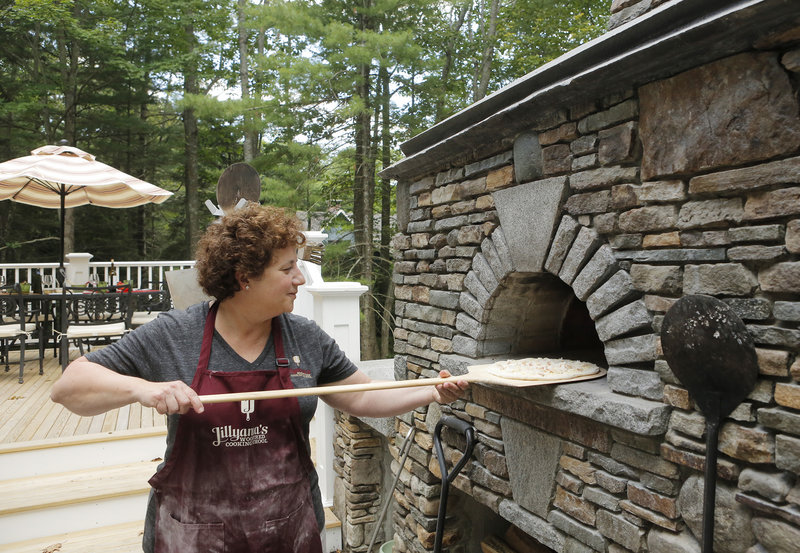
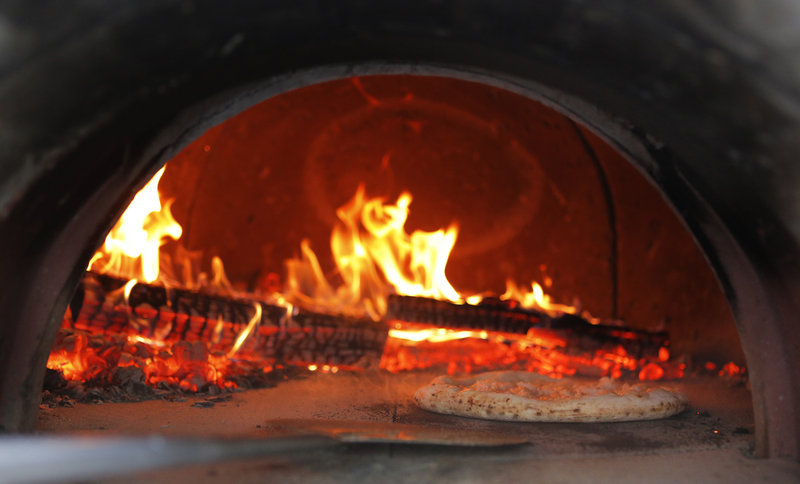
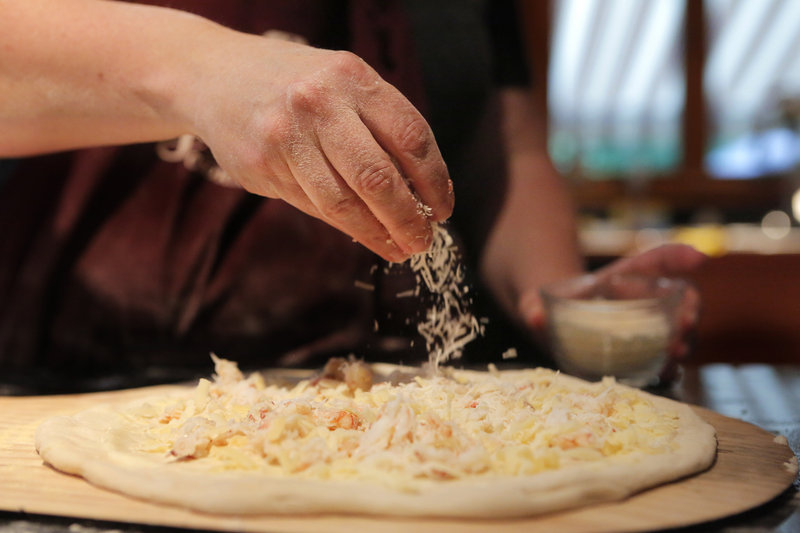
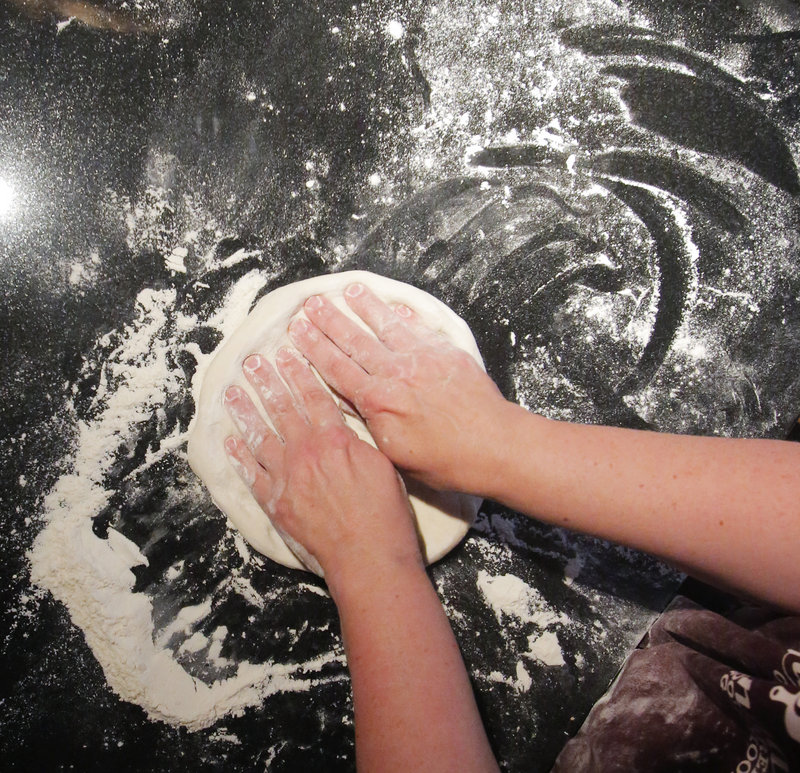
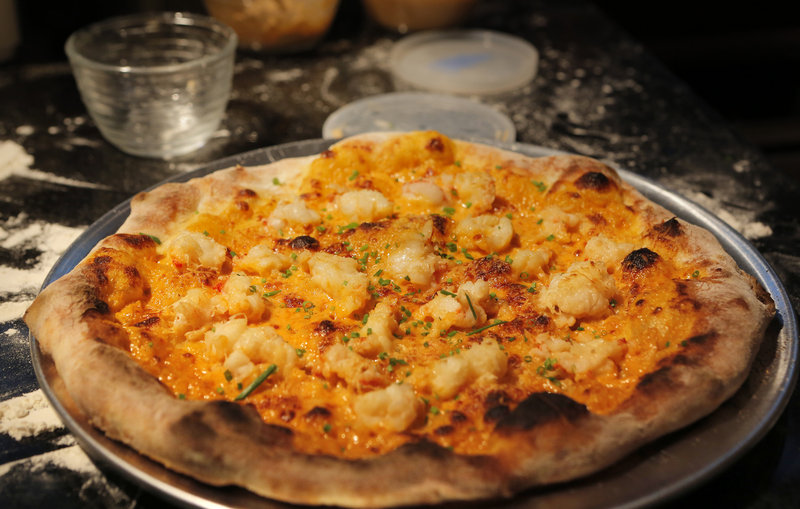

Success. Please wait for the page to reload. If the page does not reload within 5 seconds, please refresh the page.
Enter your email and password to access comments.
Hi, to comment on stories you must . This profile is in addition to your subscription and website login.
Already have a commenting profile? .
Invalid username/password.
Please check your email to confirm and complete your registration.
Only subscribers are eligible to post comments. Please subscribe or login first for digital access. Here’s why.
Use the form below to reset your password. When you've submitted your account email, we will send an email with a reset code.